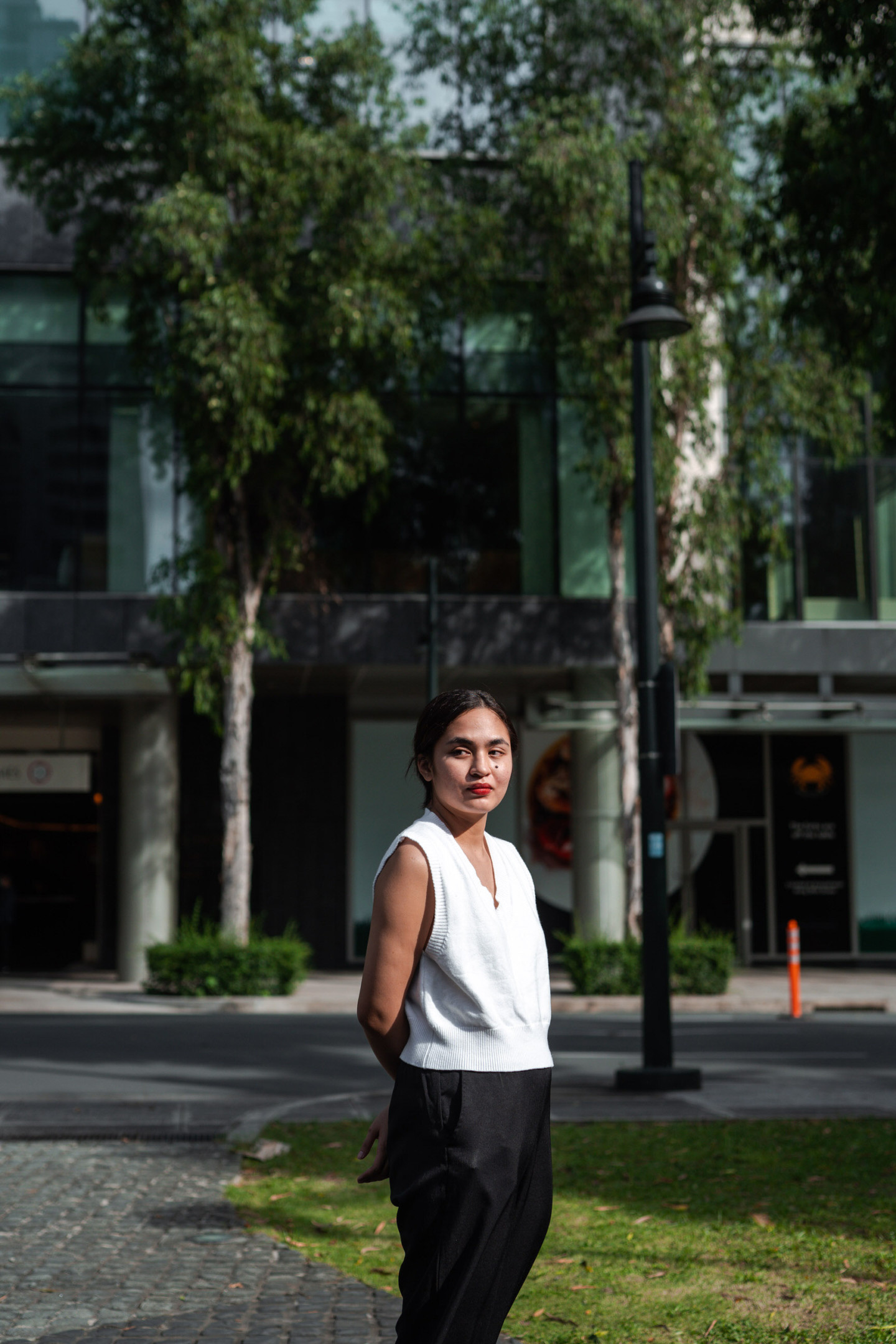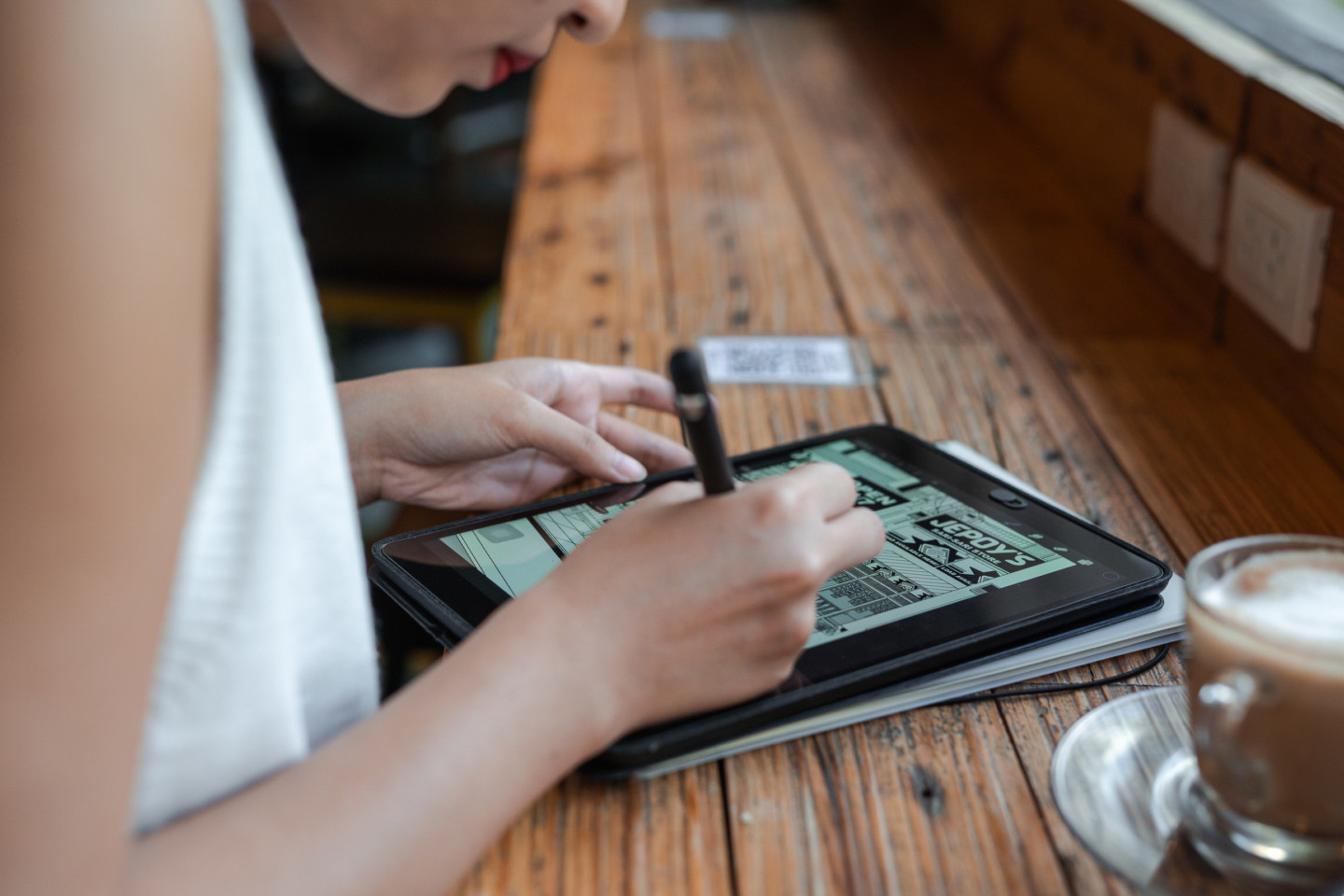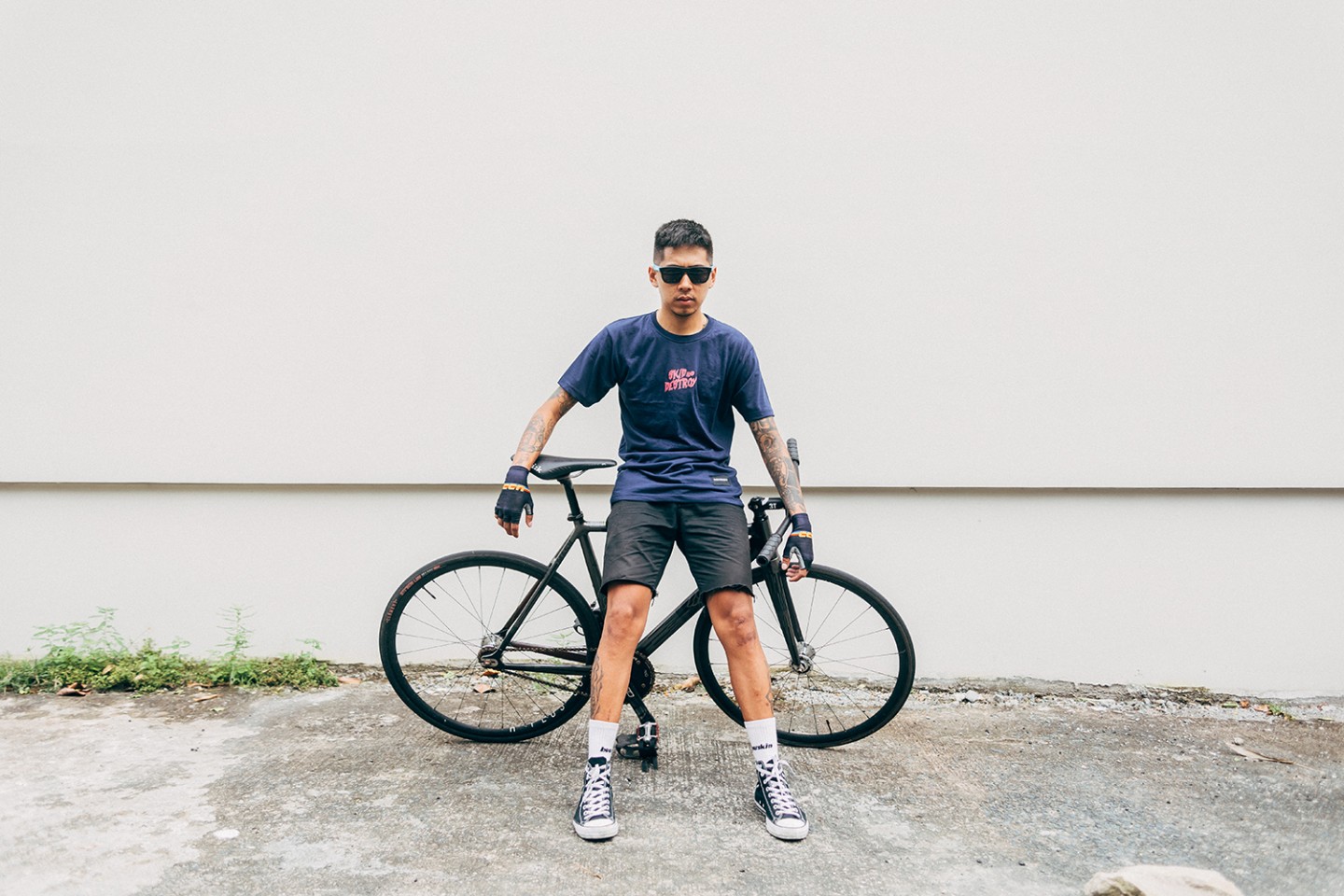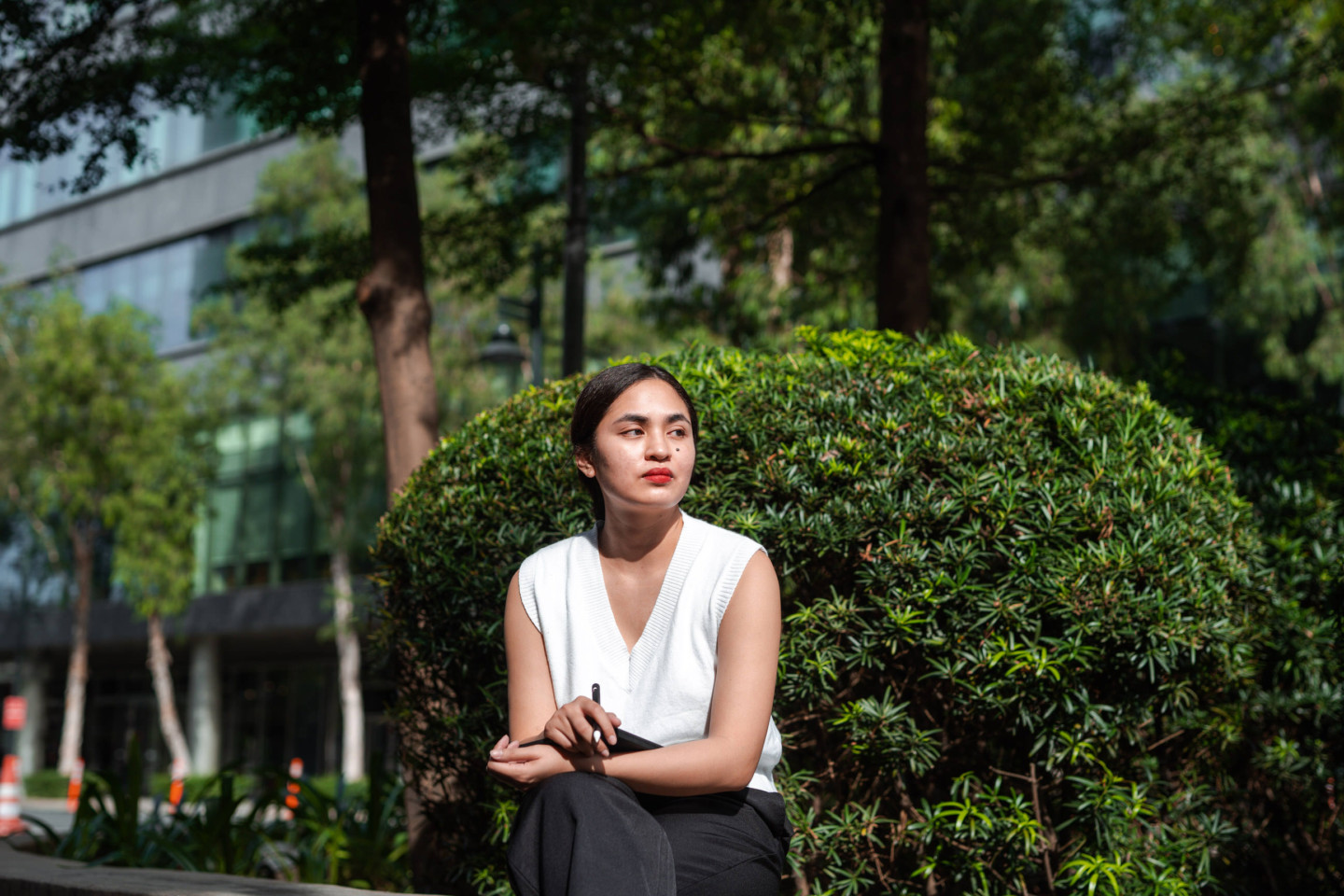
In art, whether as a design professional, illustrator, or creative head in advertising, a stylistic voice is important — in daring to say, the aspect of creation.
How does one come about with creating? Does it come naturally, procedural to the creative expression one takes toward life? Ultimately, whether as innate talent, inspiration from other pieces in art, or the drive to find a sense of meaning, how does one find their own style in the realm of art?
We got in touch with designer-illustrator Mady Marcelino, known as Hey Mady!, and got into the nitty gritty of her style, talking about her start in the industry, influences, and her thoughts on the concept of niches in art and art styles.
Who is Hey Mady! and how did she come about?
I was in a really bad place four years ago and I wanted to find an outlet where I can let my emotions out. I explored different medium and styles during that period. One I was feeling down while having lunch a the office, I decided to try drawing to pass some time. From then on, I just kept practicing with that specific style—not having any foresight that people would relate or develop a deeper connection with it. But later on, people started to tell me that they felt peaceful when looking at my art so I thought, “Hey, my Illustrations do have an effect.” That’s how Hey Mady! came about. It’s me basically just wanting to people feel what I felt when I did my illustrations all those years ago. That’s where I feel best.
What are you up to now?
I’m trying to do Hey Mady! full-time, and I still do freelance work too. The last client I did with was for a shirt collab with Manila Takeout.
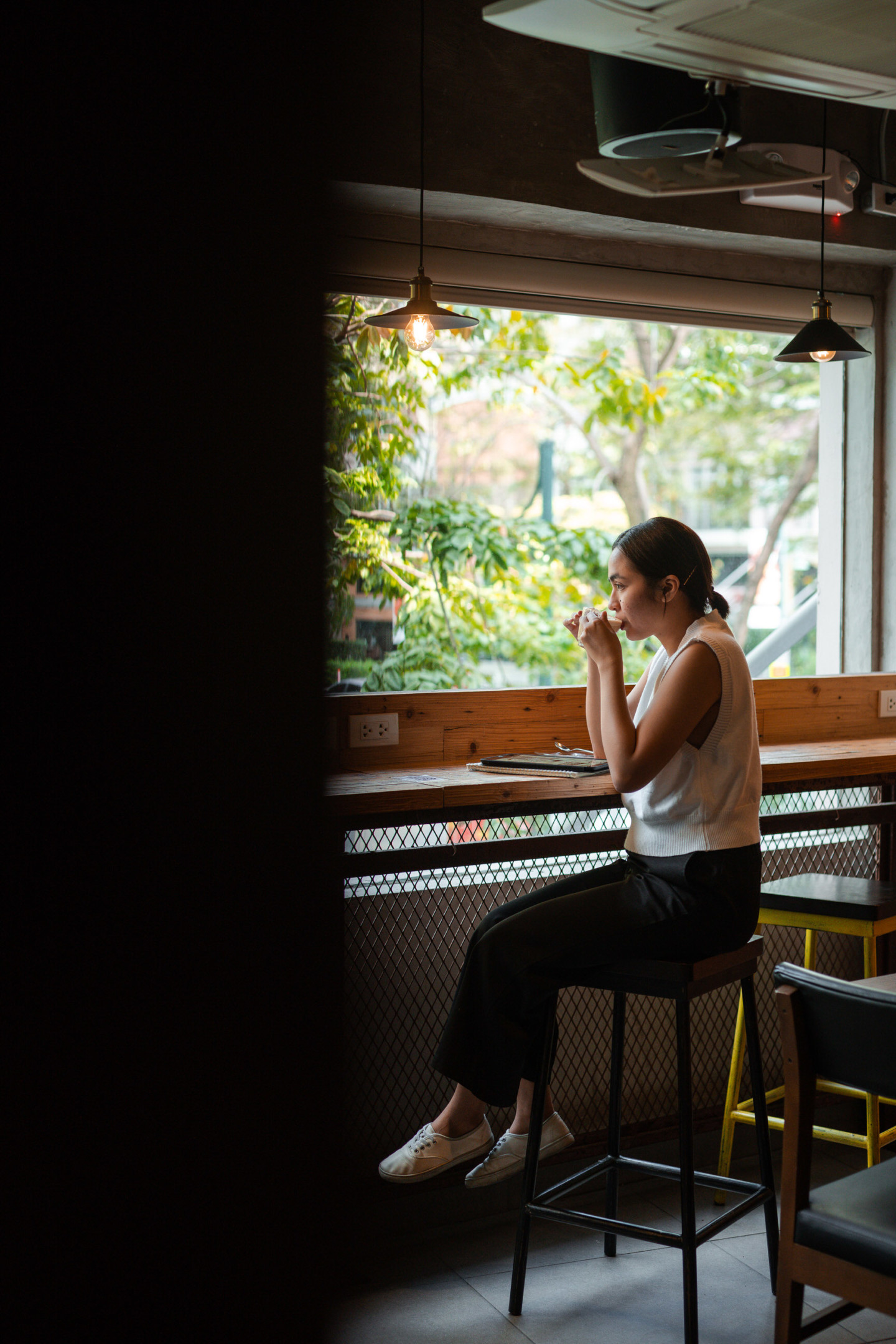
Images — Zaldine Alvaro
How would you describe your illustrations?
With all my works, both in past and present, I try as much as possible to incorporate the Hey Mady! vision: to make them feel peaceful when they look at my work, trying to remind them through my illustrations to feel as human as they should be.
Did the style evolve from something else, previously? How did you keep developing your style after stumbling upon it?
I read somewhere that if you drew 50 lines, or 50 geometric lines, you could back yourself out. Whenever I illustrated, whatever issues I was thinking about at the time usually disappeared. It was here that my technique in perspective drawing really, improved.
If you would put a descriptor of your style, what would you call it?
Solitude. There are 2 meanings when you hear ‘solitude’, and that’s usually “peaceful” or “sad.” I feel like the emotion I release most of the time is solitude. When you look at my illustrations, most people say that they feel ‘peace’ when they see it. Others, say they feel sad, instead. In solitude, it’s both.
How did you get into design? Is the world of Mady, the designer, different from that of Hey Mady!, the illustrator?
I wouldn’t say it is different. With Hey Mady!, I’m more focused on emotions, but as Hey Mady! the designer, it’s more focused on providing solutions and being objective, while not totally disregarding the humanity in design. I didn’t study design or fine arts; I was a communications student at Far Eastern University In my 3rd year in college, I considered pursuing fine arts or design but because it was so expensive, it was not an option. With just a few steps away from finishing college, it didn’t seem feasible to shift to fine arts with just one year left. I compensated for that after college by pursuing design. It was at my first design job where I learned most of what I know now. Design is not just about making things pretty; it has to have a sense of identity in who you design for. It’s me doing it with Hey Mady! at its core, while still cooperating with the client it was intended for.
Before delving into the world of design, where would you say you drew the most inspiration for your work?
I feel like I owe a lot of influence in my works to Studio Ghibli. Films like Spirited Away, Howl’s Moving Castle, Kiki’s Delivery Service – a lot of people consider these as kiddie movies, but for me, these were eye-openers. When I was a kid, my dad got me a copy of Spirited Away, where I eventually got the inspiration to be open with myself, to give myself an option to really feel—that’s part of the biggest inspiration in my work: what you really feel, what your true emotions are, I try to incorporate it with Hey Mady!
Besides Studio Ghibli films, part of the influences were animes. As a kid, I watched shows like Cardcaptor Sakura and read mangas. There’s a lot of Japanese media an culture influence in my works.
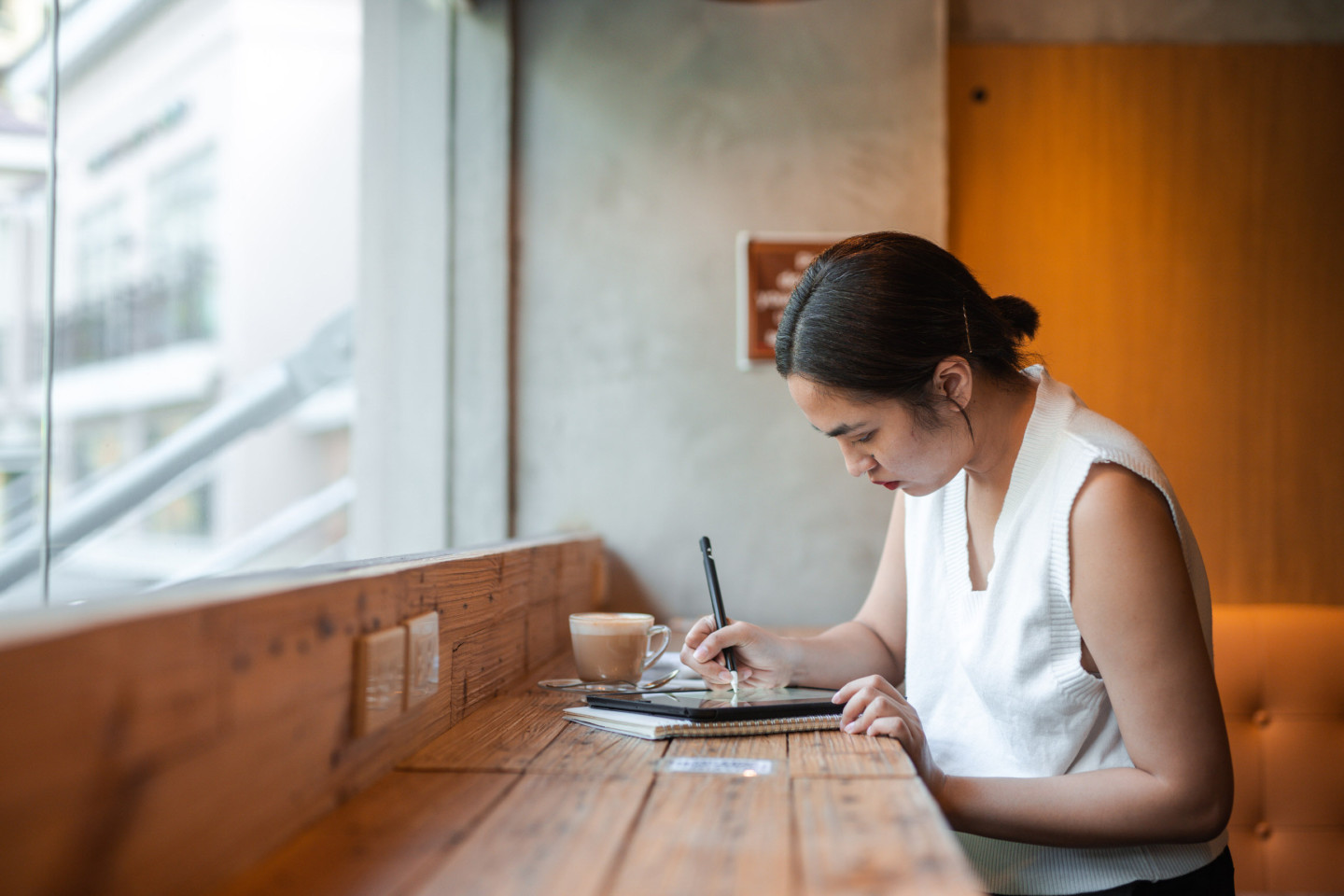
Why the black and white scheme?
I’ve always felt that it was a more personal choice to keep color out of my works. It’s more challenging on how you can show certain emotions using only two colors. This is what I wanted to show with Hey Mady! How can you portray complex emotions with just black and white? It also kind of helped that I already didn’t do so well with color work, so this just led to me focusing on the original trope.
Coming to find your own voice in art is presumably difficult – painstaking and tedious, at times. What are some of the hardest parts of carving your own style and how important is it to artists to find their niche?
I don’t want to use technical terms – what may have worked for me may not what for others. If I could advise someone who wants to find their niche, you have to learn to love the idea of finding your niche. Love the process – it doesn’t happen overnight. Though, as cliché as it sounds, don’t get off that thrill you’re trying to pursue; you’ll get there.
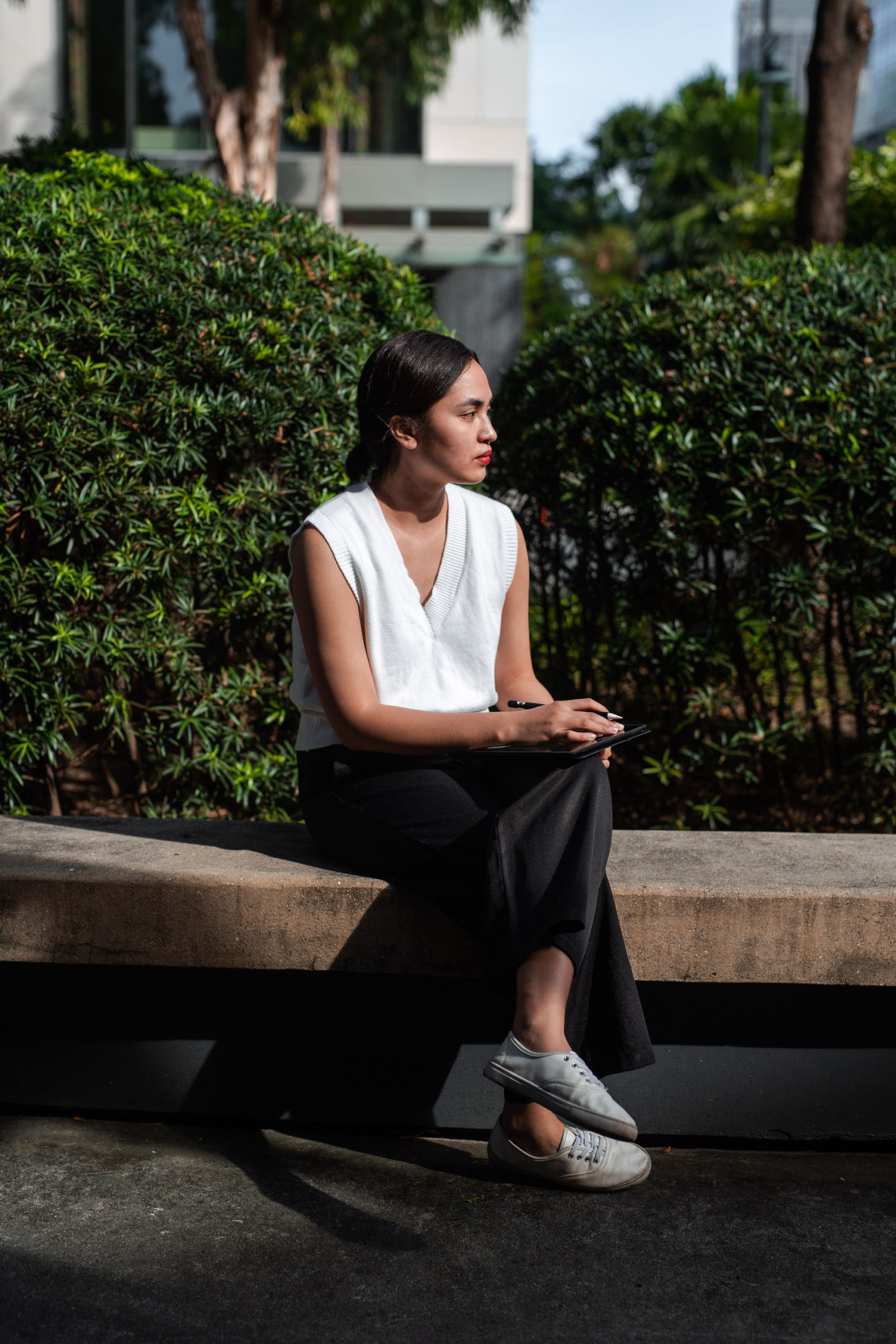
Do you ever feel restricted by the style you’ve managed? How do you balance between feeling constrained versus feeling captivated? Exploring different styles?
Most people know me as this illustrator who does perspective illustration. It feels restricted when, for example, there are open-calls for certain styles in art, and sometimes what the theme calls for doesn’t match with mine. These tend to be the constraints of my illustrations, in a way that it doesn’t match with what I do – perspective illustrations, to be specific. I try to brush it off, of course – to try and think of it instead as, if I’m unable to join, there’s probably some other open call somewhere where I can. Even the monochromatic aspect of my work means I can’t collaborate with other people’s works. But, still – brush it off. There are always going to be opportunities; maybe just not today.
Aside from illustration, what else do you fancy? Any other hobbies?
At the start of the pandemic, aside from books and movies, I’ve started doing yoga – not really intending to do it well or to do it perfectly but to just do it. This pandemic has merged my work and my personal life together, so as a kind of way to set aside some personal time for myself and from everything else happening, I figure yoga could help settle my nerves and relax me – simple things that won’t stress me out.
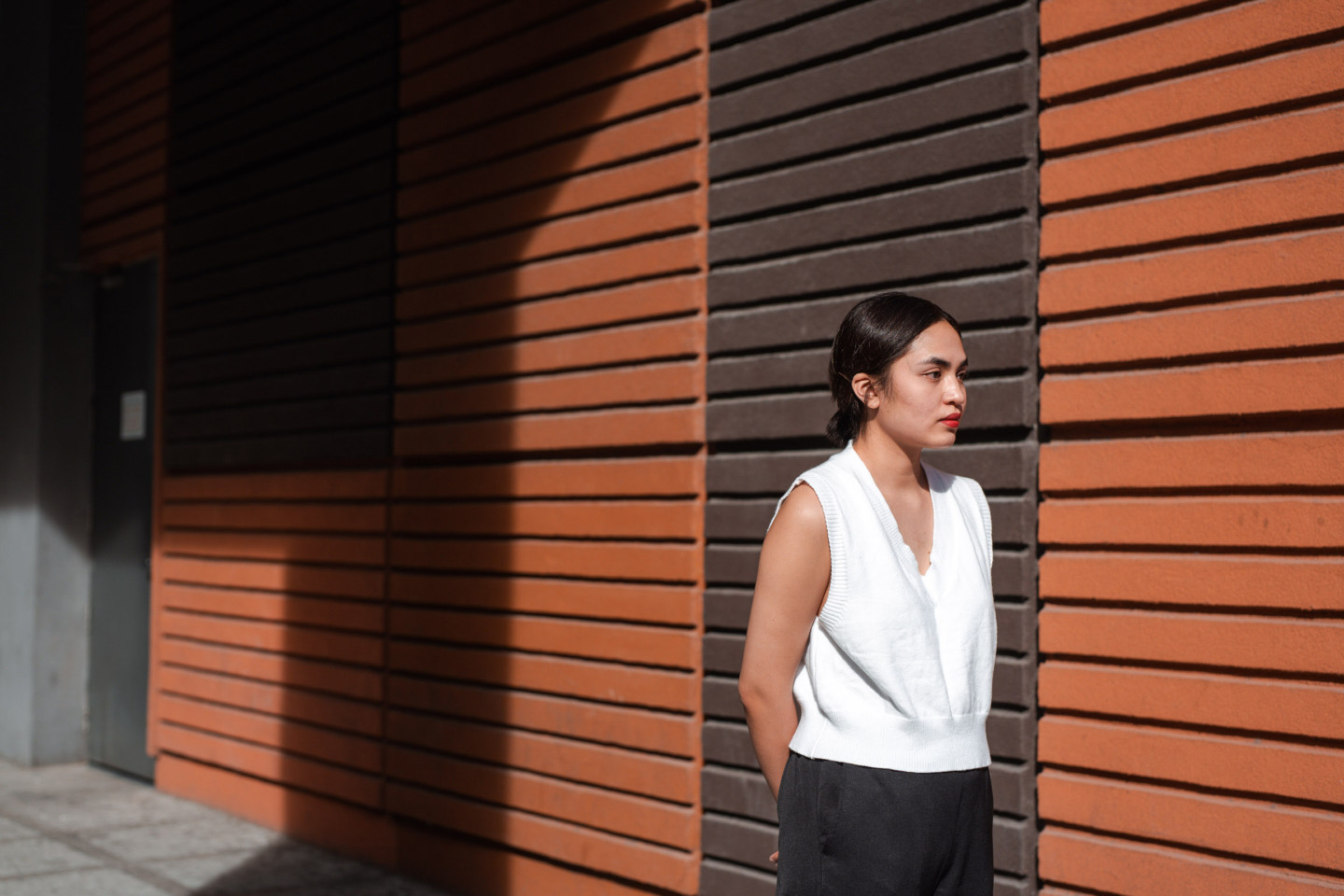
It was also here that she brought up an earlier point about angling on your niche. Like being faced with a lingering question of which answer still grappled with her, she wanted to repeat a particular point about finding one’s own style. Finding your own niche, especially out of a non-conjunctional college program — fresh from graduation, still resonated with her, it seemed. And who wouldn’t find themselves in similar straits? Many of those who are in the same situations after graduating, whether in fields that they had chosen versus those that they hadn’t, already had problems about learning the real dynamics of really owning your own, once in the workplace.
But she reiterated, once again, as if gospel.
“When finding your style, it’s also important to recognize that even when you’re good at what you do, you also have to be genuine and true with yourself. You have to do something that makes you happy. Don’t do things just to impress other people. When you do things for others and not yourself, that’s not going to take you far. It really means something to be true to yourself, and when you do, the right people come, the right people appreciate who you are. Life is short. Do what you want. It’s important to be passionate, but nothing’s going to happen if you don’t practice.”
A moot point. It was at this, that our time was coming to a close, and I needed to end us off with a continual point, somewhere others could take inspiration from, with a specific objective in mind, and build upon their craft from there.
What’s any piece of media, whether visual, musical, or cinematic, you would recommend to seasoned, slumped, or new artists, to motivate their inner style to come out?
I’d go back to the roots of where I realized eye-opening moments and thoughts—I’d go back to it and re-spark the thought that, “Yeah, this is why I got into it.” That being said, Spirited Away and Howl’s Moving Castle are films I could recommend for the way that it reminds you, super simplistically, to be in tact with yourself and intact with your own emotions. Go back to your roots, to whatever implanted in you to pursue art in the first place.
